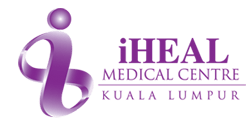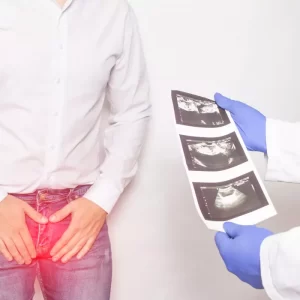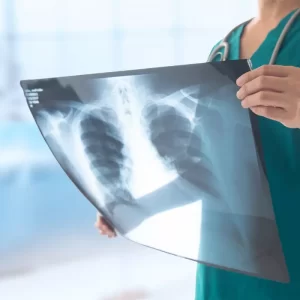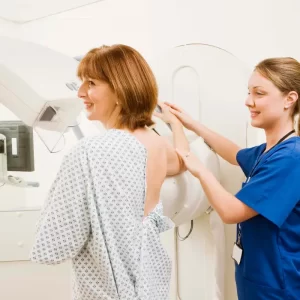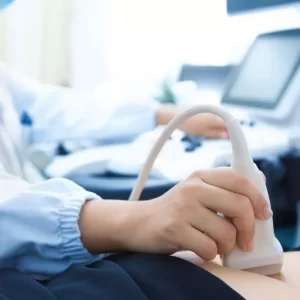Ultrasound Breast
Ultrasound imaging of the breast uses sound waves to produce pictures of the internal structures of the breast. It is used to help diagnose breast lumps or other abnormalities found during a physical exam, or on a mammogram or breast MRI. Ultrasound is safe, noninvasive, and does not use radiation.
Description
What Is Ultrasound Breast?
Ultrasound imaging is a noninvasive medical test that helps physicians diagnose and treat medical conditions. It is safe and painless. It produces pictures of the inside of the body using sound waves. Ultrasound imaging is also called sonography. It uses a small probe called a transducer and gel placed directly on the skin. High-frequency sound waves travel from the probe through the gel into the body. The probe collects the sounds that bounce back. A computer uses those sound waves to create an image. Ultrasound exams do not use radiation (x-rays). Because ultrasound captures images in real-time, it can show the structure and movement of the body’s internal organs. The images can also show blood flowing through blood vessels.
What are the benefits?
- Most ultrasound scanning is noninvasive (no needles or injections).
- Occasionally, an ultrasound exam may be temporarily uncomfortable, but it should not be painful.
- Ultrasound is widely available, easy to use, and less expensive than most other imaging methods.
- Ultrasound imaging is extremely safe and does not use radiation.
- Ultrasound scanning gives a clear picture of soft tissues that do not show up well on x-ray images.
- Ultrasound provides real-time imaging. This makes it a good tool for guiding minimally invasive procedures such as needle biopsies and fluid aspiration.
- Ultrasound imaging can help detect lesions in women with dense breasts.
- Ultrasound may help detect and classify a breast lesion that cannot be interpreted adequately through mammography alone.
- Using ultrasound, doctors are able to determine that many areas of clinical concern are due to normal tissue (such as fat lobules) or benign cysts. For most women 30 years of age and older, a mammogram will be used together with ultrasound. For women under age 30, ultrasound alone is often enough to determine whether an area of concern needs a biopsy or not.
What are the limitations of Ultrasound Imaging of the Breast?
- Ultrasound is one of the tools used in breast imaging, but it does not replace annual mammography.
- Many cancers are not visible on ultrasound. Many calcifications seen on mammography cannot be seen on ultrasound. Some early breast cancers only show up as calcifications on mammography. MRI findings that are due to cancer are not always seen with ultrasound.
- Biopsy may be recommended to determine if a suspicious abnormality is cancer or not.
